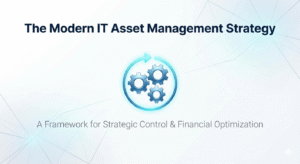When you have a sturdy disaster recovery plan in place, you’re doing one of the best things you can do for your business. If you’re in an industry that commands strict data protection compliance, you need to make sure your disaster recovery plan meets relevant standards. Here are some top tips for making sure your disaster recovery policy is compliant.
Choose backup in a different geographical area
Adverse weather events can pose a significant threat to your data. If there’s a hurricane or earthquake and you store your data in the same area as your business, you may not be giving it the protection it requires.
If you’re going to remain extra secure, aim for two different forms of backup in two different areas. As a result, you’re less likely to experience massive data loss if disaster strikes.
Understand what compliance requires
Compliance requirements vary between industries. For example, while HIPAA is relevant to the medical sector, it isn’t applicable to finance.
If you’re unfamiliar with the compliance requirements for your industry, turn to a team of experts instead. In addition to verifying that your disaster recovery plan is compliant, they can look for signs of non-compliance in the rest of your IT plan.
Learn how long you can hold data
If you’re using a disaster recovery solution that involves the cloud, you’re not alone. By 2020, one-third of all data will either live in or pass through the cloud. But how long should you let your data remain there for?
Data storage periods will vary according to the industry you’re working in and the countries you operate in. Many will request that you only hold data for five years. While your usual storage efforts may adhere to that, have you made sure that your disaster recovery plan is doing the same? Failing to meet such guidelines can result in significant fines if you’re found to be breaching data protection laws.
Make sure your plans are up to date
When you let your disaster recovery plan grow old without any interventions, you may find that it’s no longer compliant. For example, every disaster recovery plan should have a designated person or persons who can initiate it. It should also have clearly identified roles for different types of access.
If one of the people who play an important role no longer works for your organization or has moved departments, you may find that your plan isn’t compliant. Make sure you review your plan regularly to ensure that all involved have a right to remain in their roles.
Choose a disaster recovery provider with experience
Disaster recovery providers have experience in the basics by default. But does the provider you’re looking at have experience in your specific industry?
While a provider may be excellent at tackling finance compliance issues, they may not be au fait with healthcare requirements. To reduce the risk of this becoming a problem, make sure you choose your provider carefully.
Test your plans for flaws
Your disaster recovery plan plays an important role. It’s there to protect you against the downtime that can follow a disaster that stops you from accessing your systems. Each week, 140,000 hard drives fail across the United States. In the event that yours is next, you need to test your plan to make sure it works.
Ignorance isn’t a reasonable defense if your plan does fail. However, if you can demonstrate that you performed tests that led you to believe it wouldn’t fail, you can keep yourself safe.
Your disaster recovery plan needs to be as compliant as the rest of your IT practices. With consistent reviews and the use of expert providers, you can make sure you meet your industry’s standards.





